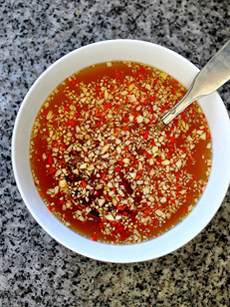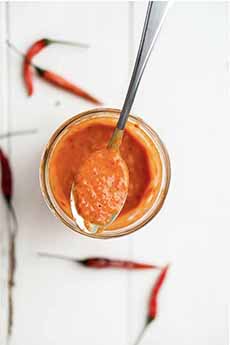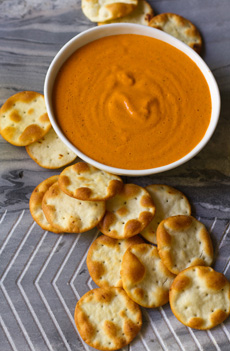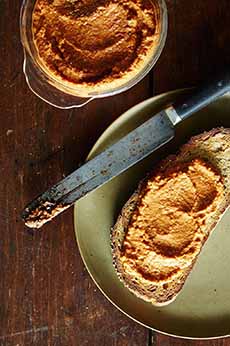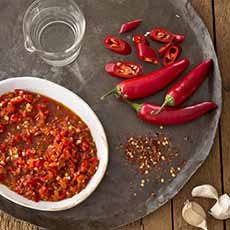TIP OF THE DAY: International Sauces On Everyday Favorites ~ Part 2 Of 3
|
|
This is Part 2 of a three-part article on 12 international flavors that can be used as sauces. The idea is to enhance your home cooking’s flavor profile by adding international-inspired sauces to chicken, fish, meat, meat, poultry and other everyday foods. You can make the sauces from scratch, or purchase them at specialty stores. Thanks to Flavor & The Menu, that presents new ideas for cuisine to restaurant chefs , for the inspiration for this article. Some are thin like marinade, others are pastes that can be thinned with broth, oil or water. This vinegar/fish/chile-based dipping sauce is the Vietnamese “mother sauce.” In Vietnam, is used with everything from pork dishes to spring rolls. It’s very adaptable beyond Vietnamese cuisine. This bright red, sweet and salty sauce is not too spicy, anc can be used: As vegan fare becomes more mainstream in the U.S., more nut-based sauces are substituted for dairy-based sauces. Two notable nut-based sauces are: The national condiment of Peru, peri-peri sauce (also spelled piri-piri) is made in medium to hot levels of spiciness. The more chiles, or the hotter the variety of chiles used, the hotter the sauce. Original peri-peri uses the African bird’s eye chile (the African word for the chile is peri-peri). Milder sauces may use only cayenne and serrano chiles. To a base of red wine vinegar and oil, garlic and lemon juice are added, plus other seasonings, which often include paprika or tomato paste for flavor and color, onions and herbs. Each company and home cook has their own recipe. Peri-peri is also used as a cooking sauce. Here’s a recipe. Peri-peri gained popularity in the U.S. through restaurants like Nando’s Peri-Peri, a South African-based chain serving barbecue chicken marinated in the sauce. Use it for: As with all recipes, the only limit is your imagination. |
|
|
8. SAMBAL Sambal is an Indonesian chili sauce or paste, a mixture of different chili peppers with garlic, ginger, lime juice, palm sugar, scallion, shallot, shrimp paste. It is an all-purpose condiment in Indonesian cuisine. Sambal could be the next trending hot sauce. According to Datassential, which monitors food trends, menu mentions of sambal have gone up 47% over the last four years. Sambal’s bright, hot heat from chiles and tangy lime juice have just a touch of funkiness from the shrimp paste. It can easily move beyond Southeast Asian cuisine to global mash-ups and modern American cuisine, such as: Stay tuned for Part 3: Savory Caramel, Tahini, Tamarind and Yogurt-Based Sauces.
|
||
